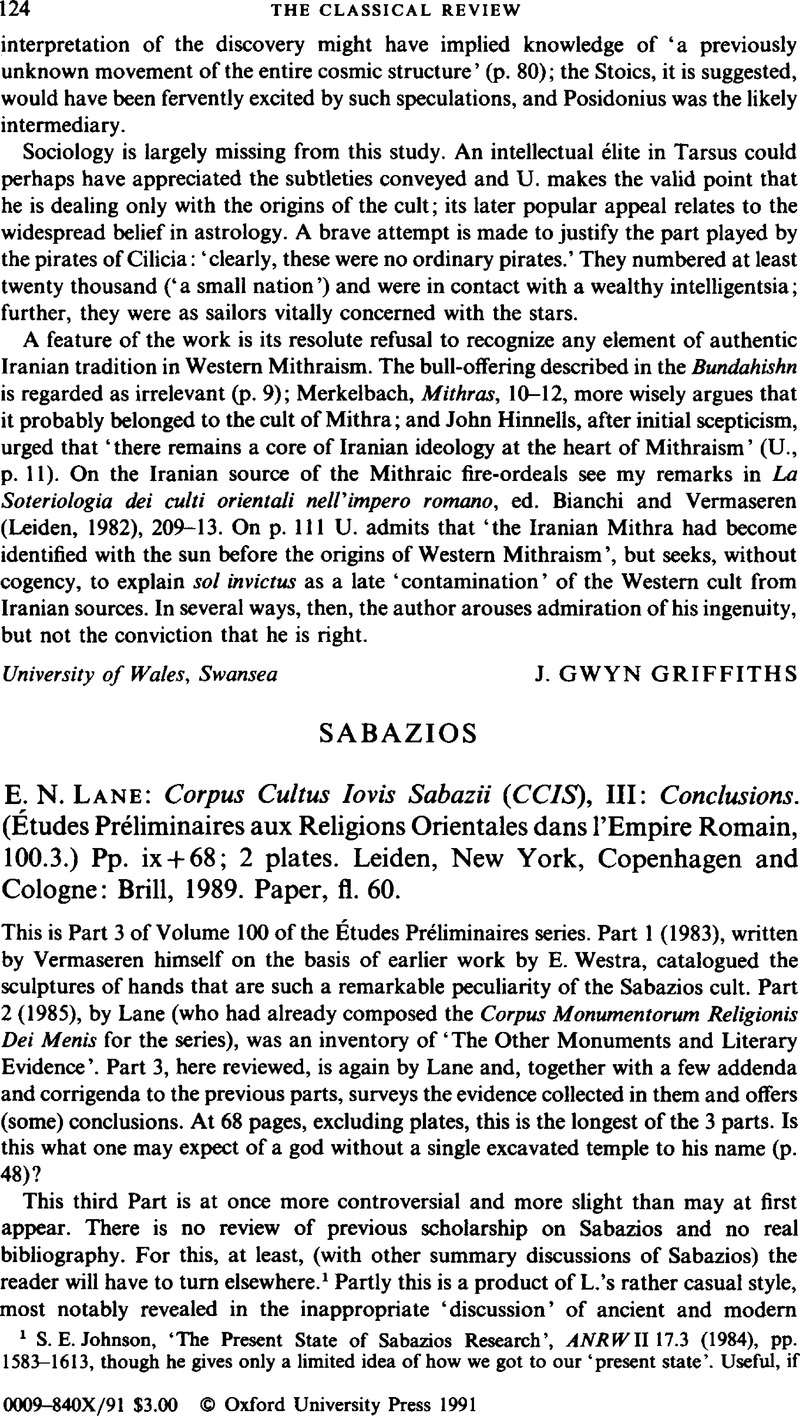No CrossRef data available.
Published online by Cambridge University Press: 16 February 2009

1 Johnson, S. E., ‘The Present State of Sabazios Research’, ANRW II 17.3 (1984), pp. 1583–1613Google Scholar, though he gives only a limited idea of how we got to our ‘present state’. Useful, if briefer, discussion of the cult and bibliography: Fellmann, R., ‘Der Sabazios-Kult’, in Vermaseren, M. J. (ed.) Die orientalischen Religionen an Römerreich, Leiden, 1981Google Scholar (Études Préliminaires, no. 93). Truth to tell, there is still much merit in H. Schaefer's article in RE 1A (1920), 1540–51 as well as in Fauth's, W. in the Kleine Pauly 4 (1975), 1478–1480Google Scholar.
2 It is not clear to me that L. had successfully refuted Turcan's identification of Sabazios on Dionysos sarcophagi (which are scarcely immune from ‘literary’ and intellectual traditions): his dismissal of the attributes which Turcan identifies looked rather cavalier (L. in Numen, see n. 3 below, pp. 21f.; Turcan, R., ‘Dionysus Dimorphos’, MEFRA 70 (1958), 243–293CrossRefGoogle Scholar, esp. 279f.). Perhaps too we can still believe that the identification with Dionysos is the result of a genuine, but aberrant early interpretatio graeca.
3 Lane, E. N., ‘Towards a definition of the iconography of Sabazios’, Numen 27 (1980), 9–33Google Scholar. He has also influenced Johnson (op. cit. 1583 n. 2).
4 Kretschmer, P., Einleitung in die Geschichte der griechischen Sprache, Göttingen, 1896, 195–198Google Scholar.
5 Kurios, RE 12 (1925), 176; epekoos, Weinreich, O., Athenische Mitteilungen, 37 (1912), 1–68Google Scholar esp. 5–25 – for which L. fobs us off with a reference to his work on Men.